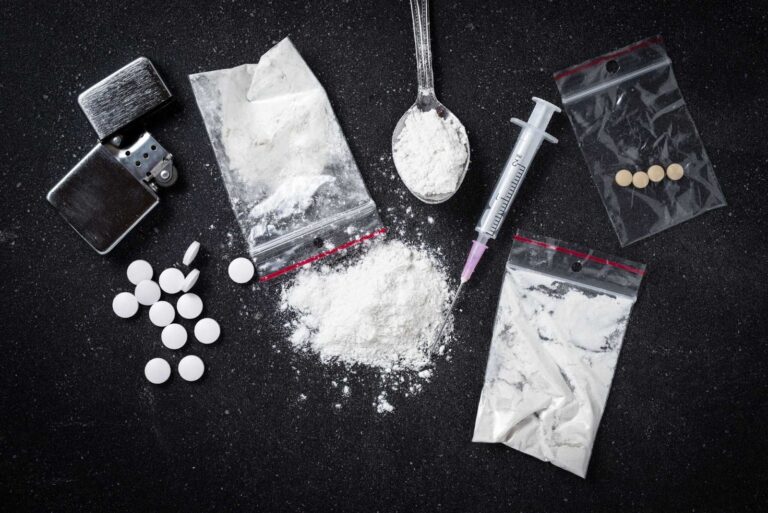How to Effectively Treat Hyperpigmentation with Hydroquinone Creams
Hyperpigmentation is a skin condition many people encounter, whether it manifests as dark spots, melasma, or other forms of uneven skin tone. Though there are numerous treatments available, one of the most trusted and widely used remedies is hydroquinone cream. Hydroquinone has been in the spotlight for decades due to its effectiveness in lightening dark spots and treating various forms of hyperpigmentation. In this blog, we will explore how to effectively treat hyperpigmentation with hydroquinone creams, its benefits, proper usage, and potential risks.
What Is Hyperpigmentation?
Hyperpigmentation occurs when the skin produces excess melanin, the pigment responsible for giving our skin its color. This leads to darkened patches or spots on the skin, which can vary in size and location. While hyperpigmentation itself is generally harmless, it can cause cosmetic concerns for many individuals.
Understanding the underlying cause of hyperpigmentation is essential for determining the most appropriate treatment. Factors like sun exposure, hormonal changes, acne, and aging can all contribute to the development of dark spots.
Common Causes of Hyperpigmentation
Hyperpigmentation has a variety of causes, and these can significantly influence the type of treatment that will work best for each individual. Some of the most common causes include:
- Sun Exposure: UV radiation triggers melanin production as the skin’s natural defense mechanism against sun damage. Over time, this can lead to the formation of sunspots.
- Post-Inflammatory Hyperpigmentation (PIH): When the skin heals after inflammation, such as acne or injury, it can produce excess melanin, leading to darkened areas.
- Melasma: Often triggered by hormonal changes, melasma appears as large, symmetrical patches, particularly on the face. Pregnancy and birth control use are common triggers.
- Aging: As we age, melanin can accumulate in certain areas, leading to age spots.
Understanding the cause of hyperpigmentation is crucial in selecting an effective treatment plan. Hydroquinone creams are particularly effective for treating sunspots, melasma, and post-inflammatory hyperpigmentation.
How Hydroquinone Works
Hydroquinone is a skin-lightening agent that has been used for decades to treat hyperpigmentation. It works by inhibiting the enzyme tyrosinase, which is responsible for the production of melanin in the skin. By reducing melanin production, hydroquinone helps to lighten dark spots and even out skin tone over time.
The effectiveness of hydroquinone lies in its ability to interrupt the melanin synthesis process at a cellular level. With consistent use, it gradually fades existing dark spots and prevents new ones from forming. However, it is not an instant solution—patients need to commit to regular and proper application to see noticeable results.
Choosing the Right Hydroquinone Cream
Hydroquinone creams come in different concentrations, typically ranging from 2% (over-the-counter) to 4% (prescription strength). Selecting the appropriate concentration depends on the severity of your hyperpigmentation and your skin type.
- 2% Hydroquinone Cream: This is available over-the-counter and is ideal for individuals with mild hyperpigmentation or sensitive skin. It’s a great starting point for those new to the treatment.
- 4% Hydroquinone Cream: This prescription-strength formula offers greater potency, making it ideal for treating more severe hyperpigmentation conditions like melasma or deep-set sunspots. A recommended option is Melalite Forte Hydroquinone 4% Skin Lightening Cream for effective results.
A dermatologist can help determine which concentration is best suited for your skin and condition.
How to Use Hydroquinone Cream Effectively
Using hydroquinone correctly is essential to achieve optimal results and avoid potential side effects. Here are some steps to guide you:
- Patch Test First: Before applying hydroquinone all over the affected area, perform a patch test on a small section of skin to check for allergic reactions or irritation. If no negative reaction occurs after 24 hours, it’s safe to proceed with the treatment.
- Cleanse Your Skin: Before applying hydroquinone, ensure your skin is clean and dry. Use a gentle cleanser to remove dirt and oils, and then pat your skin dry.
- Apply a Thin Layer: A little hydroquinone goes a long way. Apply a thin layer of the cream to the darkened areas of your skin, being careful to avoid unaffected skin.
- Use Sunscreen Daily: Hydroquinone makes your skin more sensitive to the sun, so it is absolutely crucial to use a broad-spectrum sunscreen with at least SPF 30 every day. This helps prevent further pigmentation and protects the skin from UV damage.
- Moisturize: Hydroquinone can sometimes cause dryness or irritation. Using a gentle, hydrating moisturizer can help soothe the skin and maintain its barrier function.
- Limit Use to Short Periods: Hydroquinone is typically used for short durations (no more than 3-4 months at a time). After a treatment period, it’s advisable to take a break to prevent long-term side effects and maintain the skin’s health.
How Long Does It Take to See Results?
Results with hydroquinone vary depending on the individual and the severity of hyperpigmentation. Most people start to see visible improvements in 4 to 6 weeks of consistent use. However, for stubborn pigmentation, such as melasma, it may take 2 to 3 months of continuous application to see significant changes.
Patience is key when treating hyperpigmentation. Avoid over-applying or doubling up on doses in hopes of speeding up the process, as this could lead to irritation or skin damage.
Potential Side Effects of Hydroquinone
While hydroquinone is highly effective, it’s not without its risks. Some people may experience side effects, especially if the product is used improperly or for an extended period.
- Skin Irritation: Common side effects include redness, dryness, and mild irritation. This is more likely to happen with higher concentrations or if too much product is used.
- Ochronosis: This is a rare but serious side effect that can occur with prolonged use of hydroquinone. It causes the skin to develop blue-black pigmentation, which can be difficult to treat. Limiting hydroquinone use to short-term treatments and taking breaks can reduce this risk.
- Increased Sensitivity to Sunlight: Hydroquinone makes the skin more vulnerable to sunburn, so it’s important to use sunscreen diligently and avoid prolonged sun exposure.
To minimize the risk of side effects, it’s best to follow your dermatologist’s guidance and monitor your skin’s reaction throughout the treatment process.
Who Should Avoid Hydroquinone?
While hydroquinone is generally safe for most people, there are certain groups who should avoid its use or consult with a healthcare provider before starting treatment. These include:
- Pregnant or Breastfeeding Women: There is limited data on the safety of hydroquinone during pregnancy and breastfeeding, so it’s best to avoid it unless specifically recommended by a doctor.
- Sensitive Skin Types: People with sensitive skin or those prone to eczema or contact dermatitis may find hydroquinone too harsh and may experience irritation.
- Individuals with a History of Allergic Reactions: If you’ve had allergic reactions to skincare products in the past, consult with a dermatologist before using hydroquinone.
Alternatives to Hydroquinone
For those who cannot use hydroquinone or are seeking alternatives, there are other skin-lightening ingredients that may help treat hyperpigmentation. Some popular alternatives include:
- Vitamin C: A powerful antioxidant that can brighten the skin and reduce the appearance of dark spots.
- Kojic Acid: Derived from mushrooms, kojic acid is known for its ability to lighten pigmentation and is often used in skin-brightening products.
- Licorice Extract: This natural extract has anti-inflammatory and skin-lightening properties, making it a gentler alternative to hydroquinone.
- Azelaic Acid: Known for treating acne and rosacea, azelaic acid also helps reduce hyperpigmentation without causing significant irritation.
These alternatives may take longer to show results compared to hydroquinone, but they can be safer options for long-term use, especially for sensitive skin.
Post-Treatment Maintenance
Once you’ve successfully lightened hyperpigmentation with hydroquinone, maintaining your results is key to preventing new spots from forming. Here are a few tips:
- Continue Using Sunscreen: Sunscreen is your best defense against future hyperpigmentation. Make it a part of your daily routine, regardless of the weather.
- Incorporate Antioxidants: Antioxidants like Vitamin C and E can help protect your skin from environmental damage and prevent new dark spots from forming.
- Use Gentle Exfoliation: Regular exfoliation can help keep your skin smooth and bright by removing dead skin cells and encouraging cell turnover.
- Consider Retinoids: Retinoids, such as tretinoin, can boost collagen production, improve skin texture, and enhance the effects of other brightening treatments.
Conclusion
Hydroquinone creams are an incredibly effective treatment for hyperpigmentation when used properly. By inhibiting melanin production, they help fade dark spots and improve skin tone. However, to maximize benefits and minimize risks, it’s essential to use the cream as directed, protect your skin from the sun, and consult with a dermatologist if you have any concerns. When combined with other treatments and skincare routines, hydroquinone can be a powerful tool in achieving a more even complexion.






